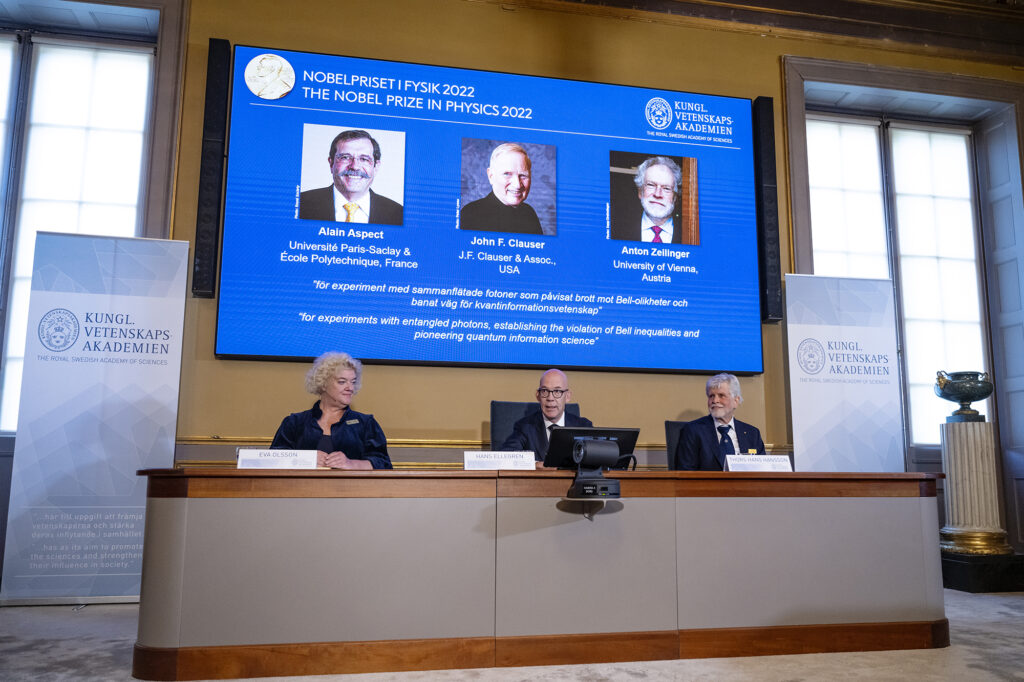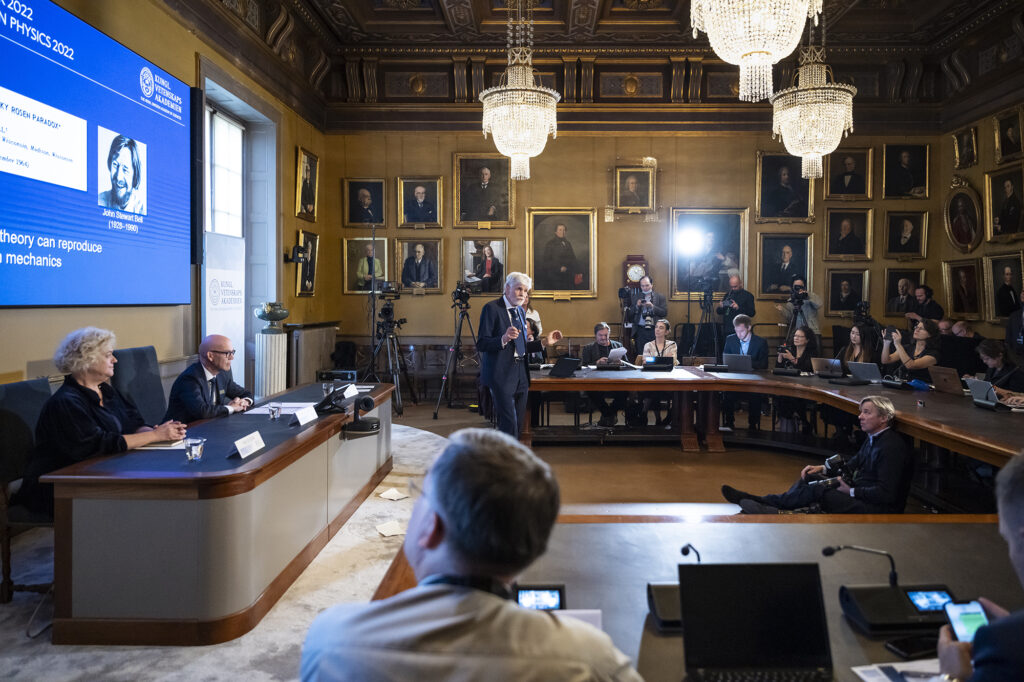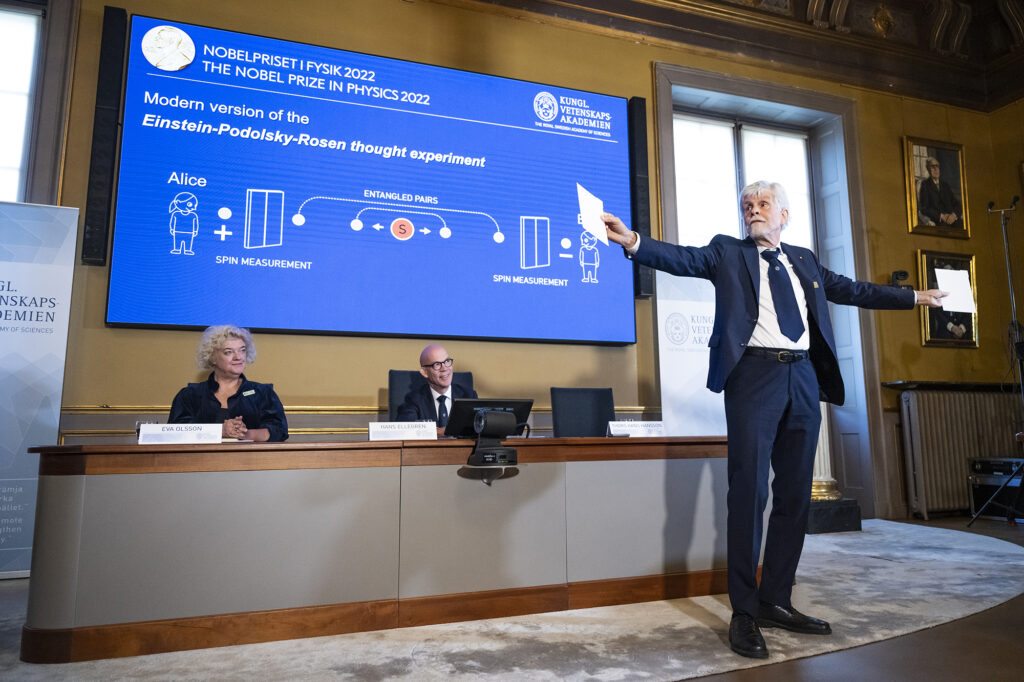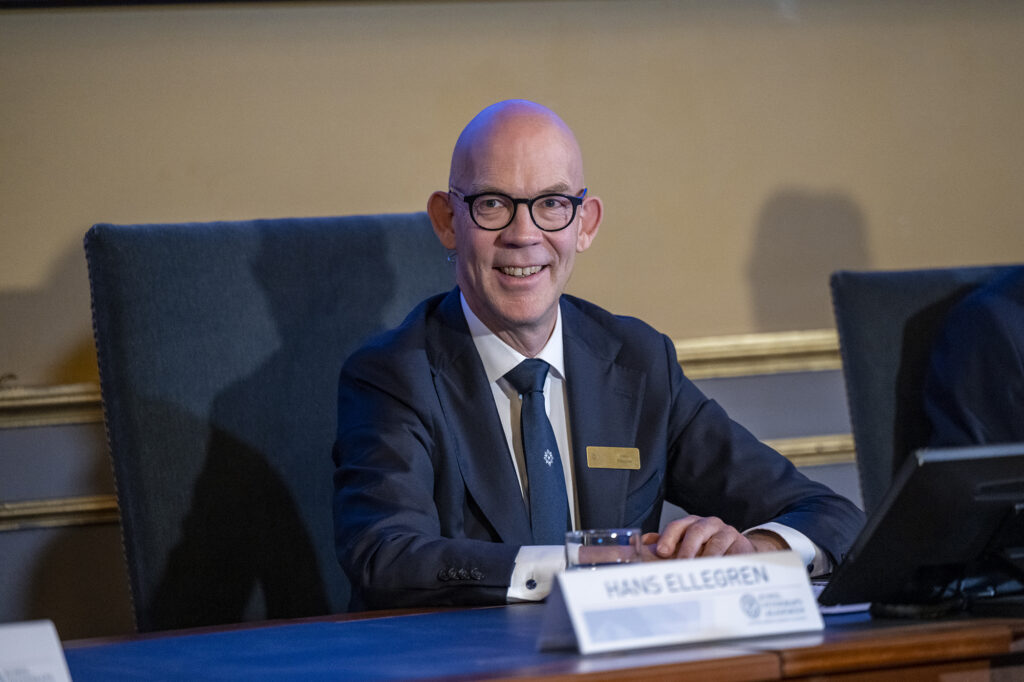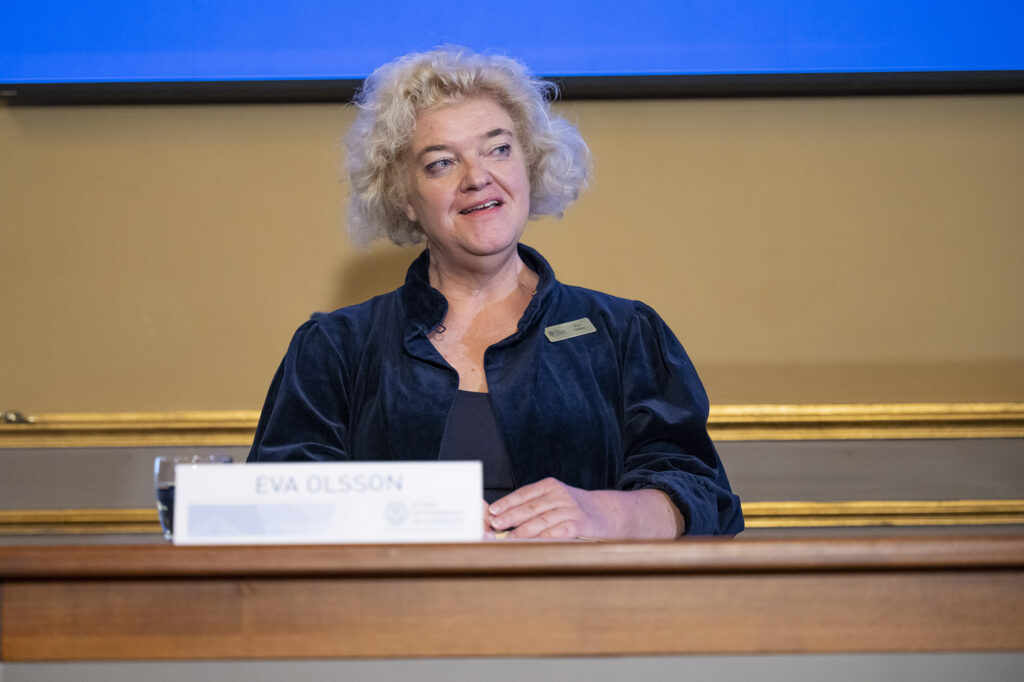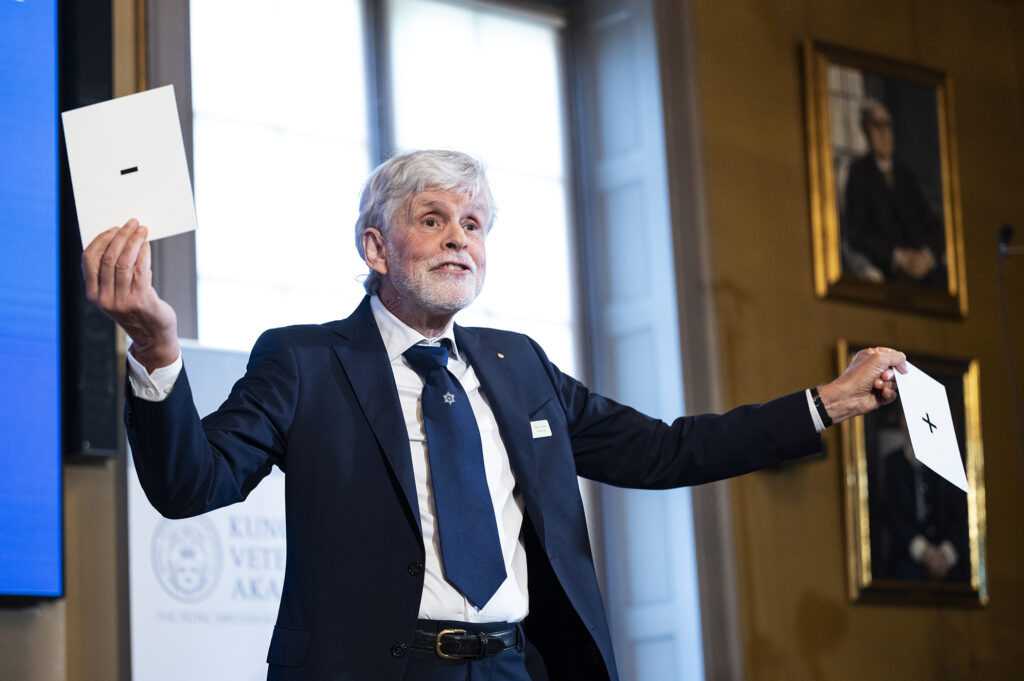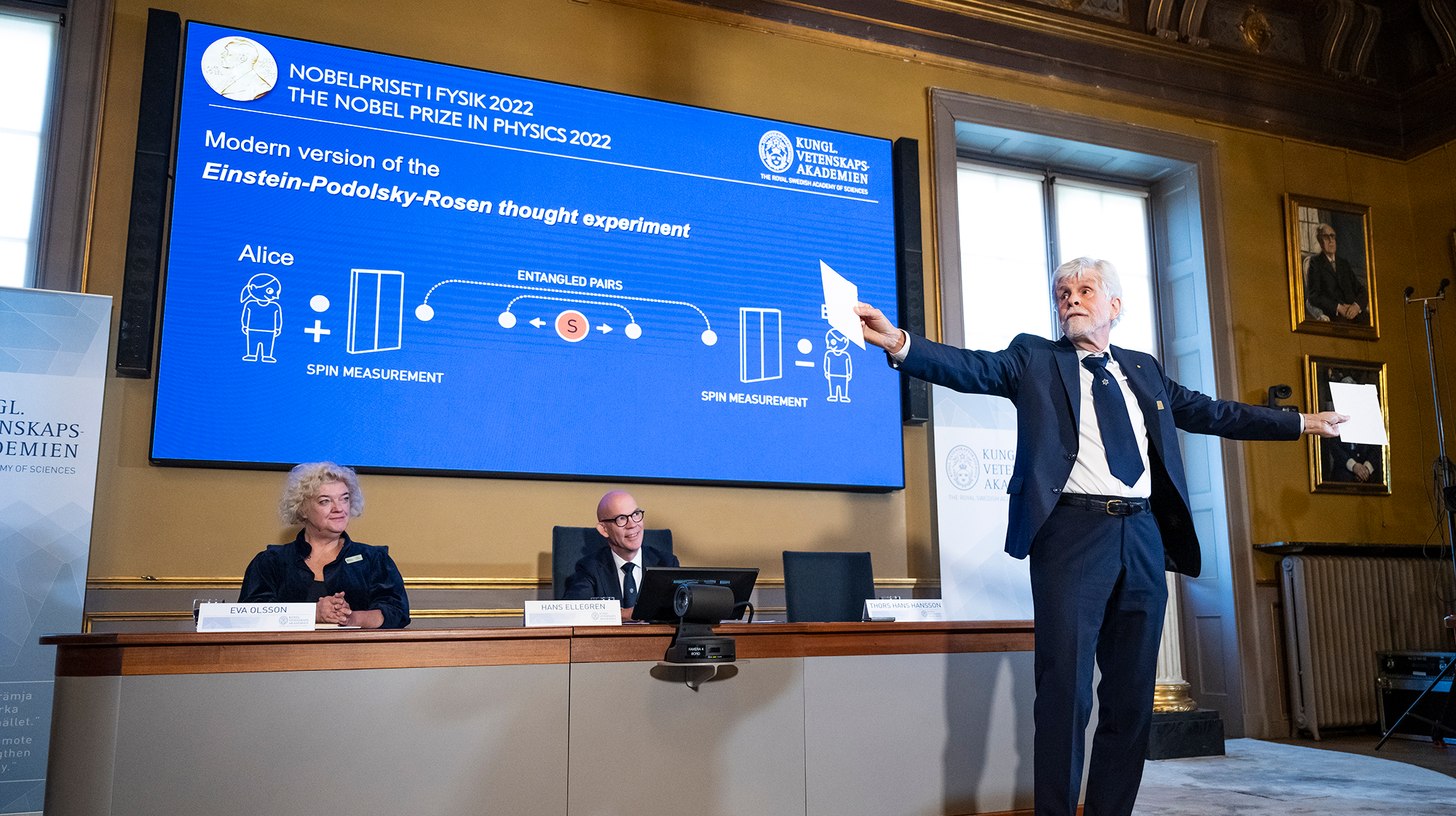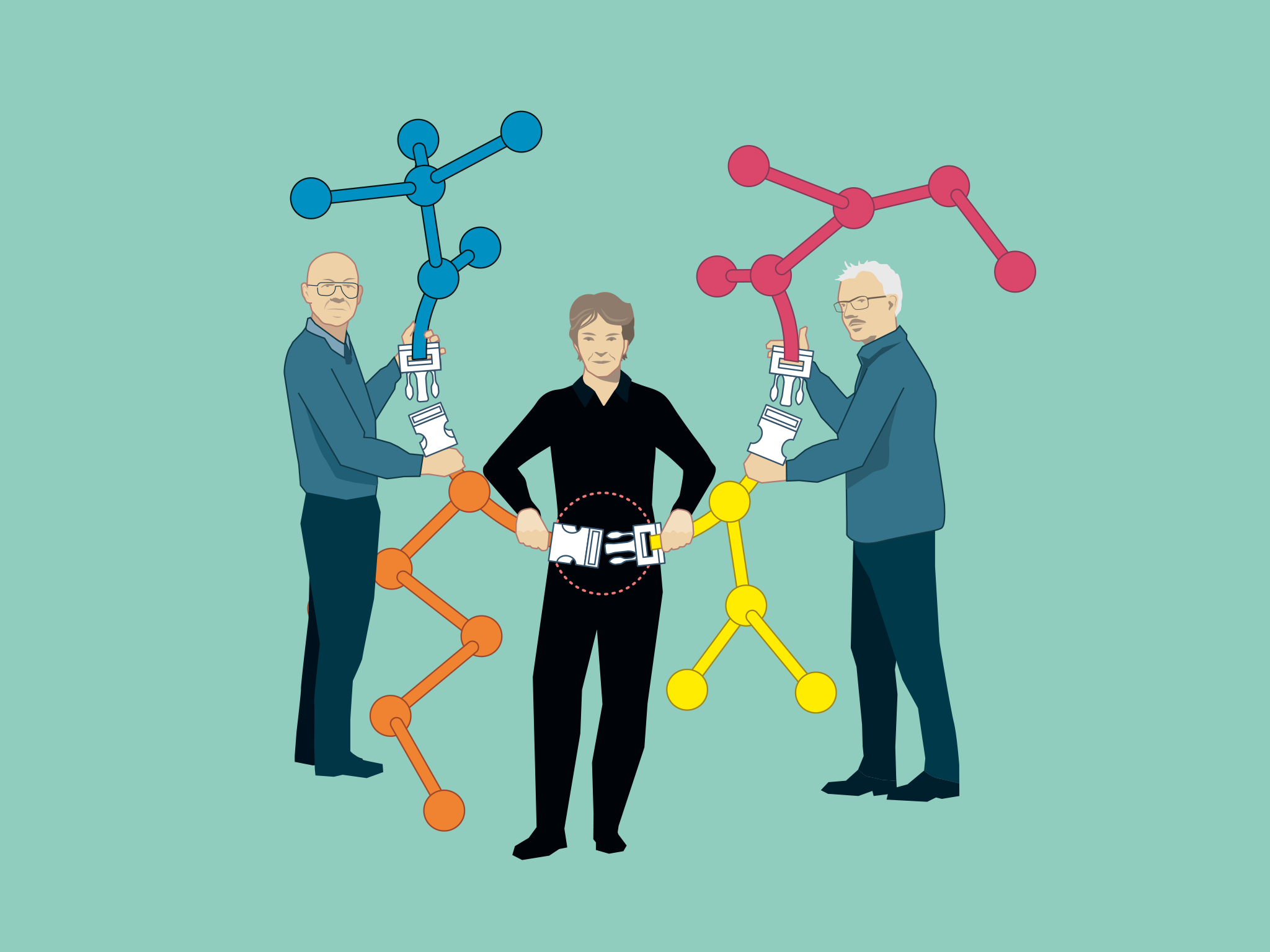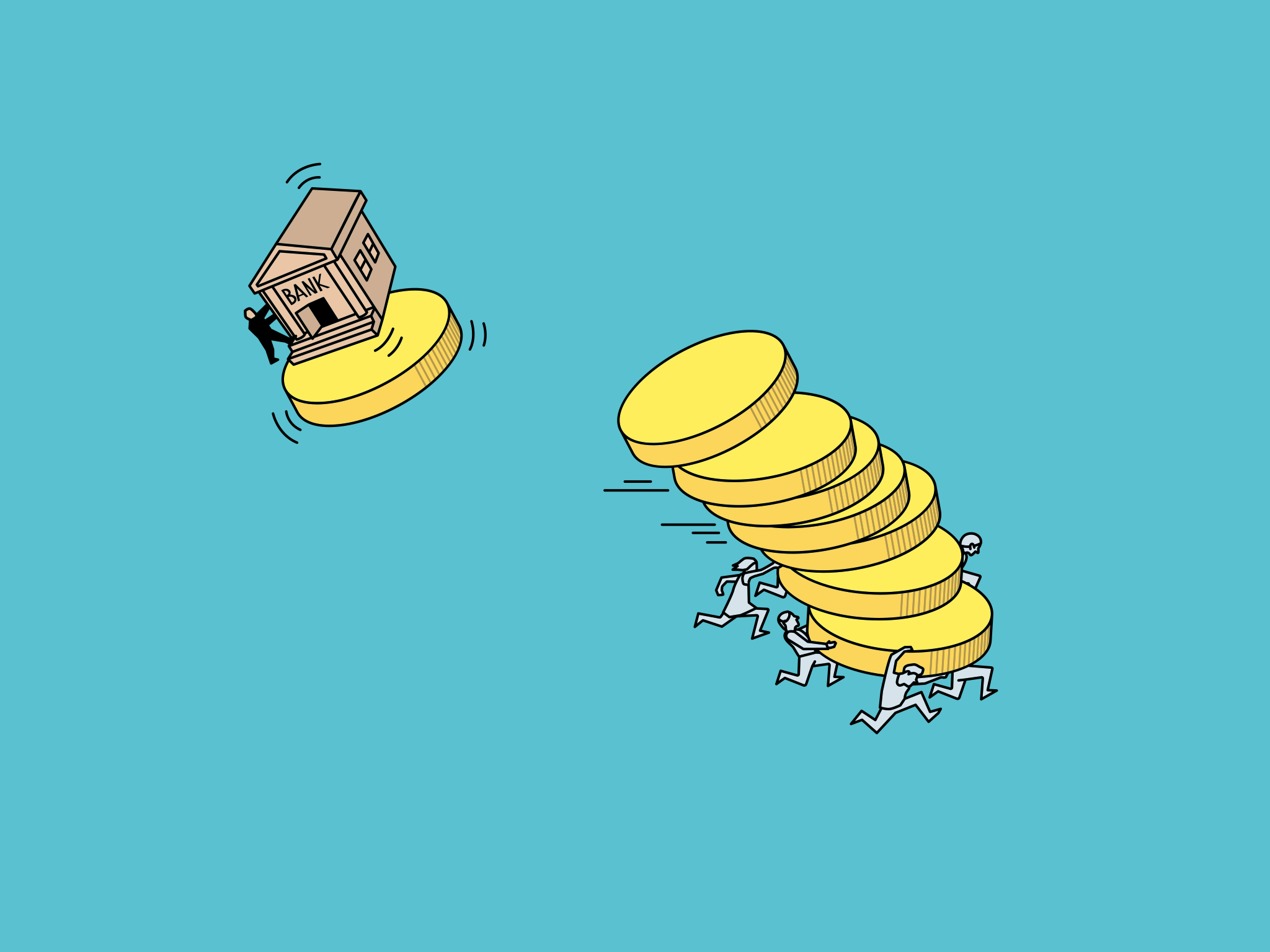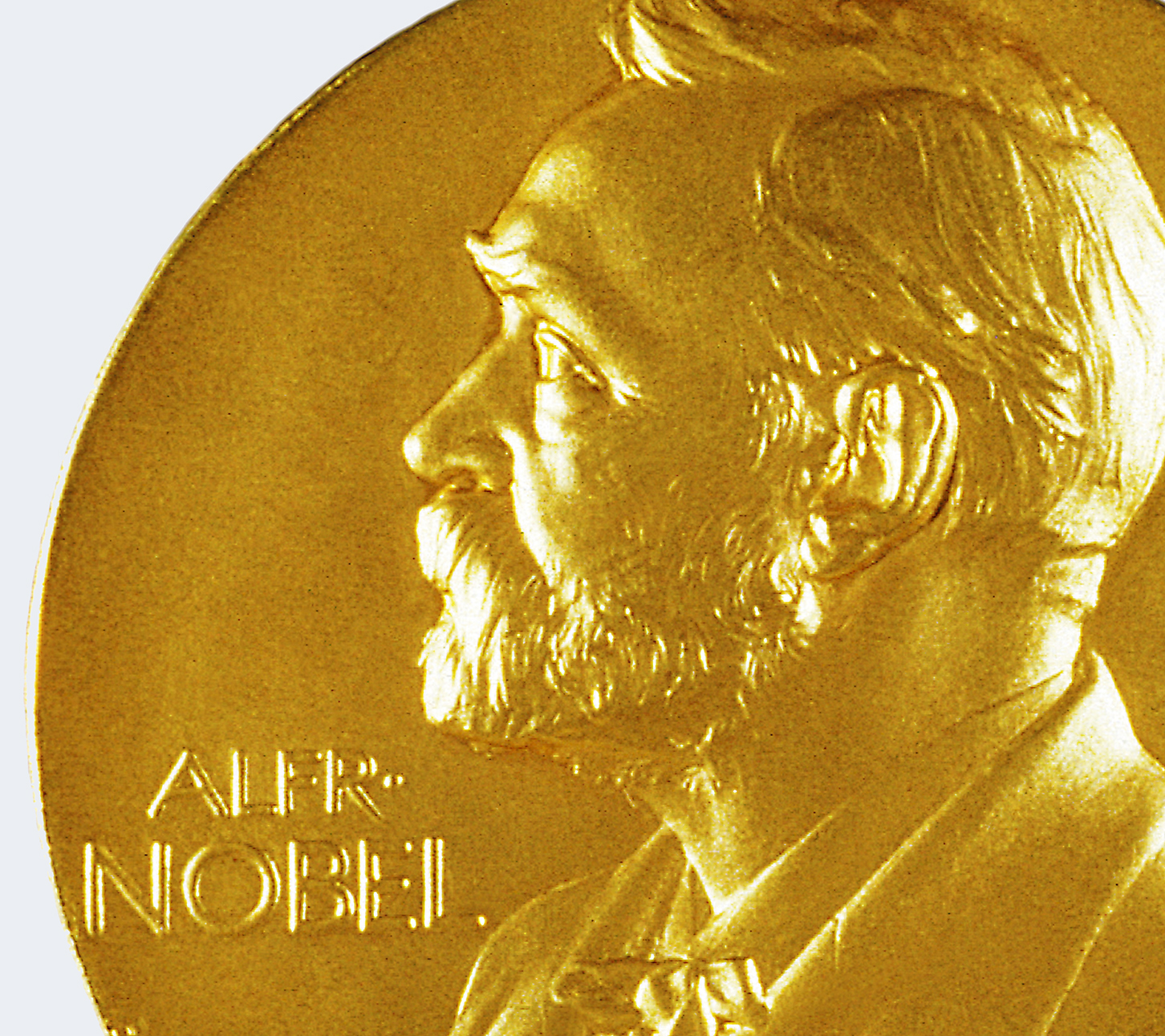The Royal Swedish Academy of Sciences has decided to award the Nobel Prize in Physics 2022 to
Alain Aspect, Institut d’Optique Graduate School – Université Paris-
Saclay and École Polytechnique, Palaiseau, France,
John F. Clauser, J.F. Clauser & Assoc., Walnut Creek, CA, USA and
Anton Zeilinger, University of Vienna, Austria.
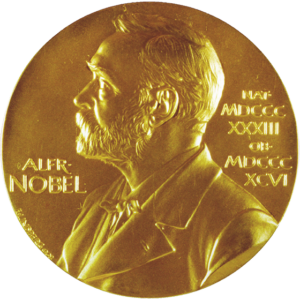 Alain Aspect, John Clauser and Anton Zeilinger have each conducted groundbreaking experiments using entangled quantum states, where two particles behave like a single unit even when they are separated. Their results have cleared the way for new technology based upon quantum information.
Alain Aspect, John Clauser and Anton Zeilinger have each conducted groundbreaking experiments using entangled quantum states, where two particles behave like a single unit even when they are separated. Their results have cleared the way for new technology based upon quantum information.
The ineffable effects of quantum mechanics are starting to find applications. There is now a large field of research that includes quantum computers, quantum networks and secure quantum encrypted communication.
One key factor in this development is how quantum mechanics allows two or more particles to exist in what is called an entangled state. What happens to one of the particles in an entangled pair determines what happens to the other particle, even if they are far apart.
For a long time, the question was whether the correlation was because the particles in an entangled pair contained hidden variables, instructions that tell them which result they should give in an experiment. In the 1960s, John Stewart Bell developed the mathematical inequality that is named after him. This states that if there are hidden variables, the correlation between the results of a large number of measurements will never exceed a certain value. However, quantum mechanics predicts that a certain type of experiment will violate Bell’s inequality, thus resulting in a stronger correlation than would otherwise be possible.
John Clauser developed John Bell’s ideas, leading to a practical experiment. When he took the measurements, they supported quantum mechanics by clearly violating a Bell inequality. This means that quantum mechanics cannot be replaced by a theory that uses hidden variables.
Some loopholes remained after John Clauser’s experiment. Alain Aspect developed the setup, using it in a way that closed an important loophole. He was able to switch the measurement settings after an entangled pair had left its source, so the setting that existed when they were emitted could not affect the result.
Using refined tools and long series of experiments, Anton Zeilinger started to use entangled quantum states. Among other things, his research group has demonstrated a phenomenon called quantum teleportation, which makes it possible to move a quantum state from one particle to one at a distance.
“It has become increasingly clear that a new kind of quantum technology is emerging. We can see that the laureates’ work with entangled states is of great importance, even beyond the fundamental questions about the interpretation of quantum mechanics,” says Anders Irbäck, Chair of the Nobel Committee for Physics.
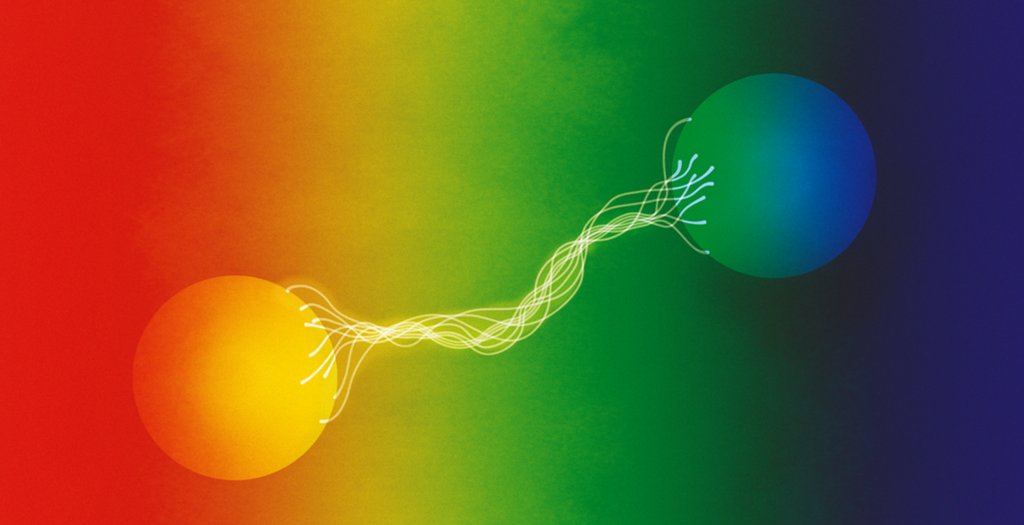
Laureates
Alain Aspect, born 1947 in Agen, France. PhD 1983 from Paris-Sud University, Orsay, France. Professor at Institut d’Optique Graduate School – Université Paris-Saclay and École Polytechnique, Palaiseau, France.
Alain Aspect, Université Paris-Saclay
John F. Clauser, born 1942 in Pasadena, CA, USA. PhD 1969 from Columbia University, New York, USA. Research Physicist, J.F. Clauser & Assoc., Walnut Creek, CA, USA.
Anton Zeilinger, born 1945 in Ried im Innkreis, Austria. PhD 1971 from University of Vienna, Austria. Professor at University of Vienna, Austria.
Anton Zeilinger, Institute for Quantum Optics and Quantum Information
Prize amount: 10 million Swedish kronor, to be shared equally between the laureates.
Documents
The illustrations are free to use for non-commercial, editorial or academic purposes. Attribute “©Johan Jarnestad/The Royal Swedish Academy of Sciences”.
Contact
Press contact
Eva Nevelius, Press Secretary, The Royal Swedish Academy of Sciences
+46 70 878 67 63, eva.nevelius@kva.se
Experts
Thors Hans Hansson, the Nobel Committee for Physics, The Royal Swedish Academy of Sciences
+46 70 376 89 63, hansson@fysik.su.se
Mats Larsson, the Nobel Committee for Physics, The Royal Swedish Academy of Sciences
+46 73 389 43 77, ml@fysik.su.se
Read more about the Nobel Prize
The official Nobel Prize website
The Royal Swedish Academy of Sciences, founded in 1739, is an independent organisation whose overall objective is to promote the sciences and strengthen their influence in society. The Academy takes special responsibility for the natural sciences and mathematics, but endeavours to promote the exchange of ideas between various disciplines.
Nobel Prize® is a registered trademark of the Nobel Foundation.
Photos from the press conference
